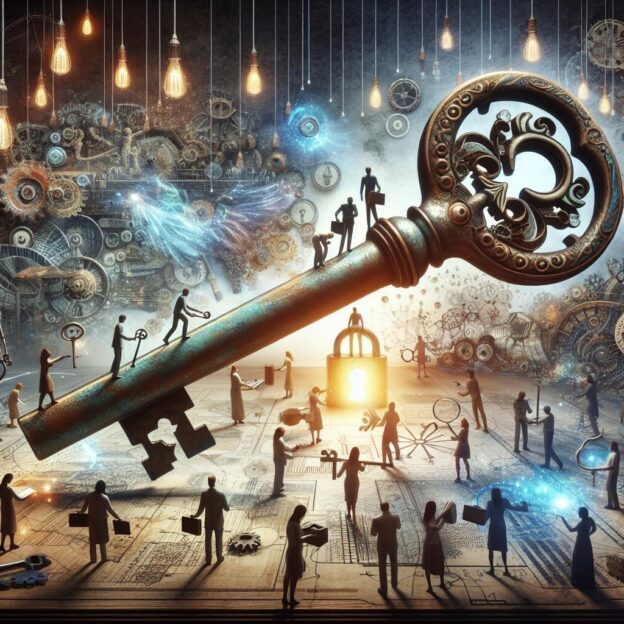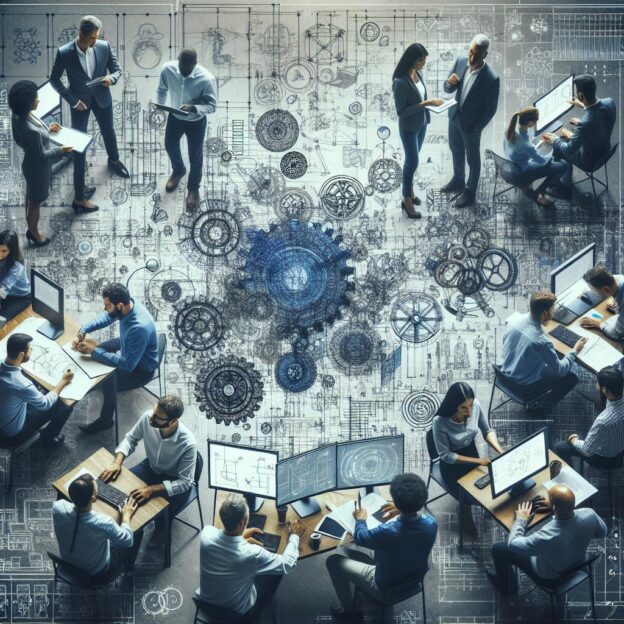In the intricate web of government operations, smooth teamwork is the glue that holds everything together. From policy-making to service delivery, effective collaboration among government agencies is essential for success. In this article, we will explore the various strategies and practices that can boost government team work and foster a culture of unity and cooperation within the public sector. Let’s dive in and uncover the secrets to building strong and cohesive government teams.
Fostering Communication and Collaboration Among Team Members
Encouraging effective communication and collaboration among team members is essential for boosting productivity and achieving success in government projects. By fostering a culture of open communication and teamwork, government teams can overcome obstacles, share ideas, and work towards common goals more effectively.
Here are some strategies to enhance communication and collaboration within government teams:
- Regular Team Meetings: Schedule regular team meetings to discuss project progress, address any issues, and brainstorm new ideas.
- Utilize Collaboration Tools: Make use of collaboration tools such as Slack, Microsoft Teams, or Google Drive to facilitate communication and document sharing.
- Encourage Feedback: Create a culture where team members feel comfortable giving and receiving constructive feedback to improve processes and outcomes.
| Benefits of Communication and Collaboration |
|---|
| Enhanced problem-solving abilities |
| Improved decision-making processes |
| Increased efficiency and productivity |
Implementing Team Building Activities to Strengthen Relationships
Team building activities are an essential tool for boosting government team work and strengthening relationships among team members. These activities help to foster collaboration, communication, and trust within the team, leading to improved productivity and morale.
One effective team building activity is a problem-solving challenge, where team members must work together to overcome a specific obstacle or complete a task within a set time frame. This not only encourages teamwork but also allows team members to showcase their individual strengths and contribute to the group’s success.
Another fun and engaging team building activity is a scavenger hunt, where team members must work together to solve clues and complete challenges in order to find hidden items or reach a specific goal. This activity promotes creativity, critical thinking, and teamwork, all of which are essential skills for a successful government team.
Encouraging Cross-functional Training and Skill Development
In order to boost government team work, it is crucial to encourage cross-functional training and skill development among employees. By promoting a culture of learning and collaboration, departments can work together more effectively to achieve common goals and deliver better services to the public.
One way to facilitate cross-functional training is to organize workshops and seminars where employees from different departments can share their expertise and learn from each other. This can help break down silos and foster a sense of unity and cooperation within the organization. Additionally, providing opportunities for employees to acquire new skills and knowledge can enhance their job performance and job satisfaction.
By investing in cross-functional training and skill development, the government can build a more versatile and resilient workforce that is better equipped to adapt to changing circumstances and address complex challenges. Ultimately, promoting collaboration and continuous learning can lead to more efficient and effective government operations, benefiting both employees and the public.
Establishing Clear Goals and Responsibilities for Each Team Member
Effective teamwork within government organizations is crucial for success. One essential aspect of fostering collaboration and productivity among team members is establishing clear goals and responsibilities for each individual. When everyone knows what is expected of them and how their role contributes to the overall objectives, it becomes easier to work towards a common goal.
One way to ensure clarity in roles and responsibilities is by outlining specific tasks and expectations for each team member. This can be done through the use of SMART goals – goals that are Specific, Measurable, Achievable, Relevant, and Time-bound. By setting clear, actionable goals for each team member, it becomes easier to track progress and hold individuals accountable for their contributions.
Additionally, regular check-ins and meetings can help ensure that everyone is on the same page and working towards the same objectives. These meetings provide an opportunity for team members to share updates, ask for help or clarification, and collaborate on solutions to any challenges that may arise. By fostering open communication and collaboration, government teams can boost their effectiveness and achieve their goals more efficiently.
fostering strong teamwork among government officials is essential for achieving a more efficient and effective public service. By promoting collaboration, communication, and trust within teams, governments can better address the needs of their citizens and accomplish their goals. Let us strive to work together harmoniously, with a shared vision and a common purpose, to make our society a better place for all. Together, we can boost government teamwork and create positive change. Thank you for reading.









